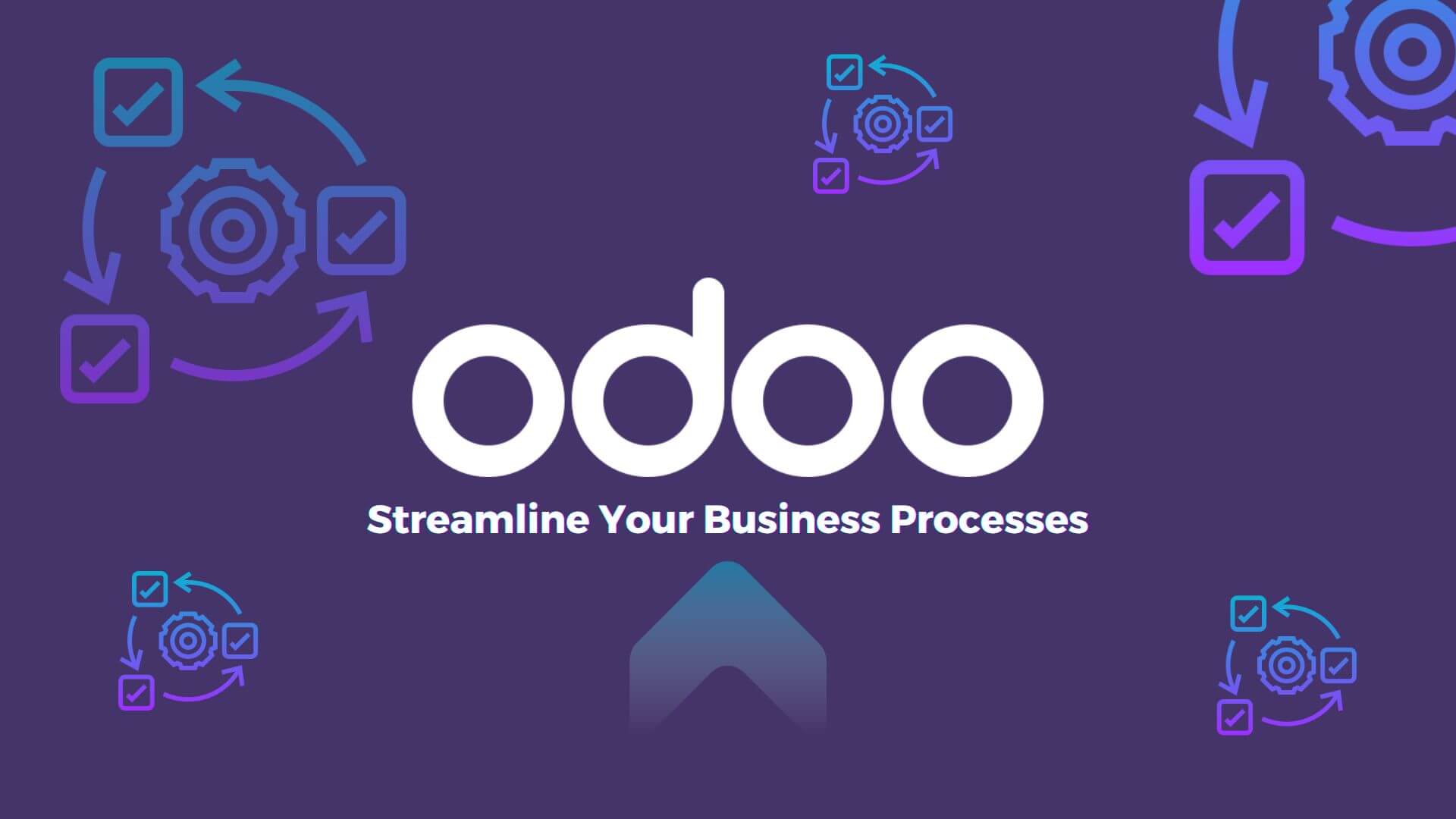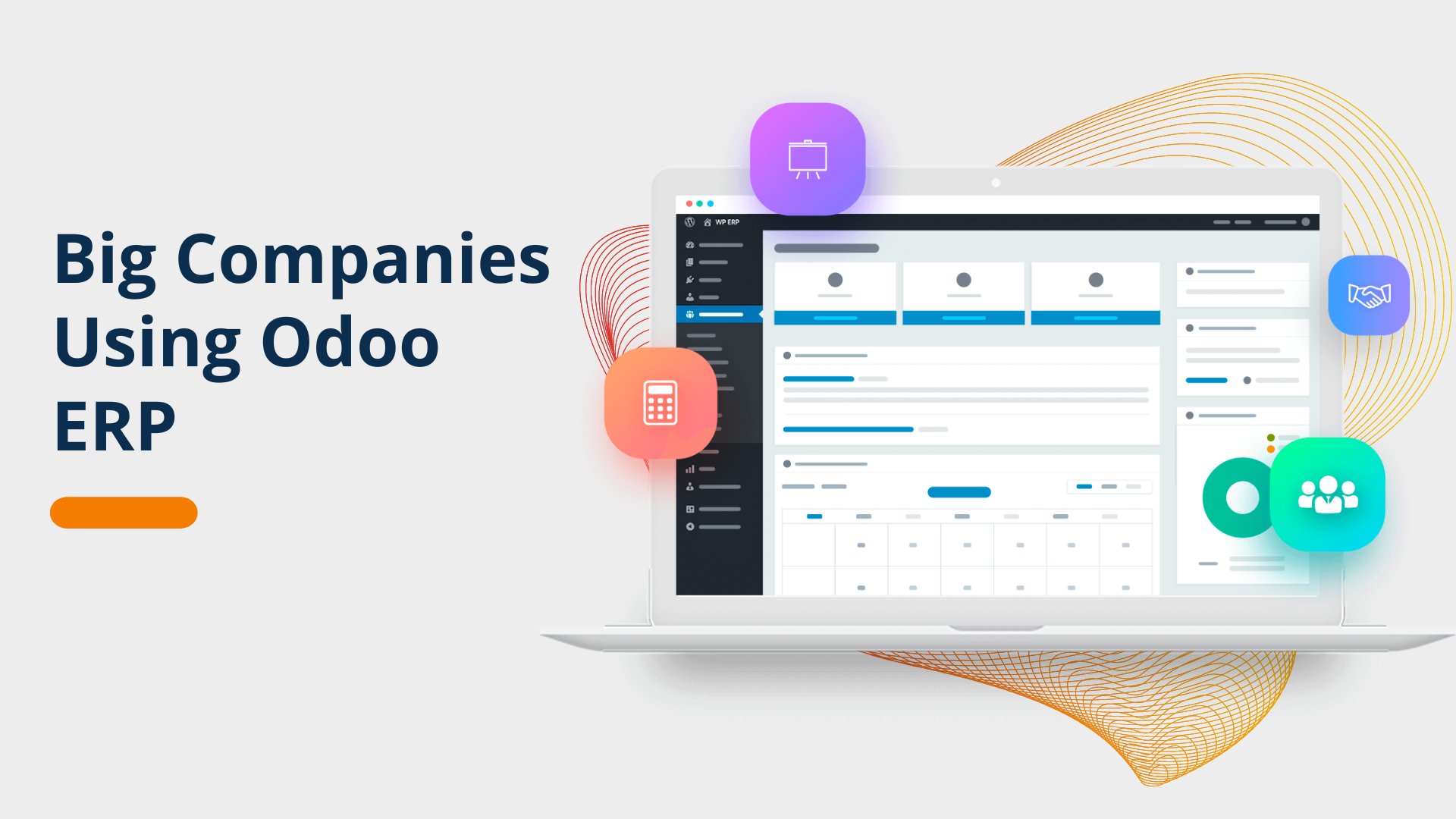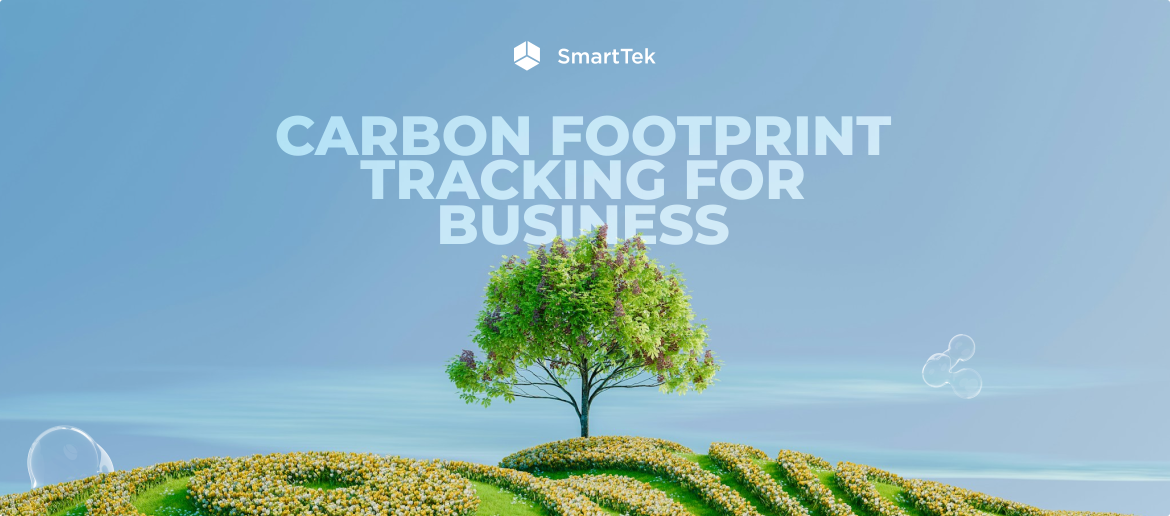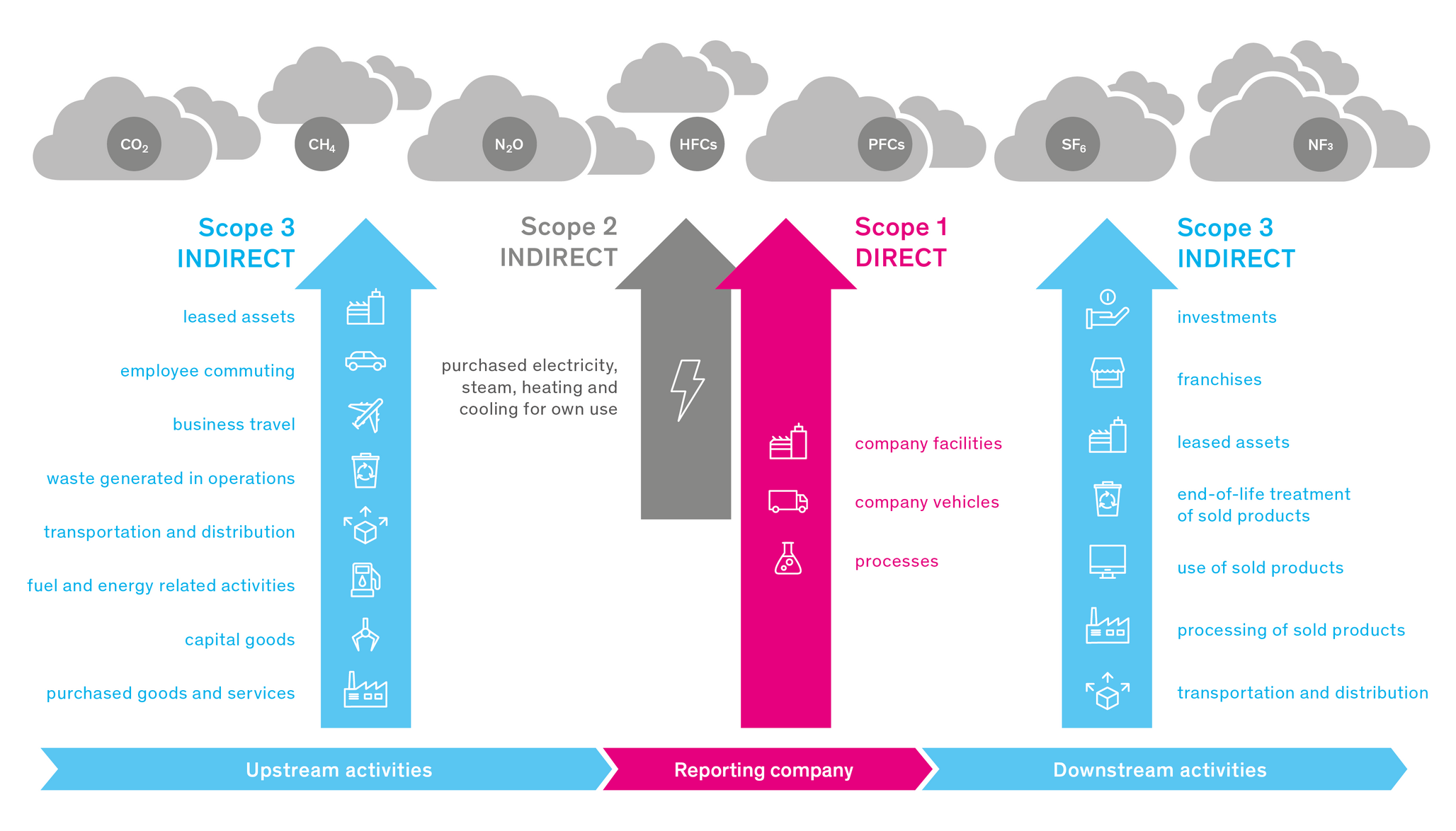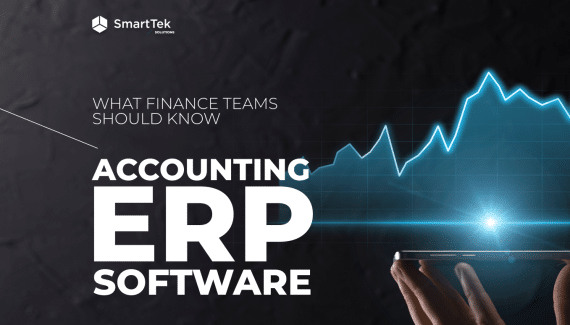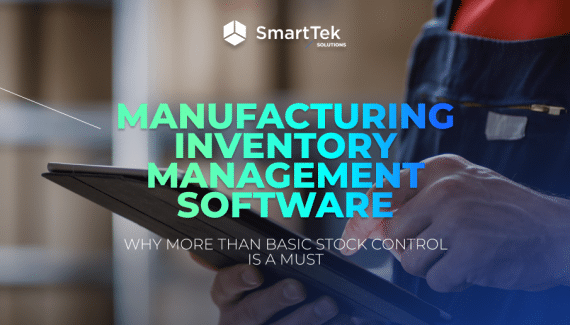Everyone seems to be talking about climate change these days — your clients, stakeholders, your social media feeds, and even your employees. Carbon footprint tracking gradually turns from a nice-to-have to a must-do for your business. Why’s that so?
The world now aims at a net-zero transition, with green initiatives and emission reduction leading the way. Over 8,000 companies, representing 90% of global GDP, have already made their net-zero commitments.
Despite the efforts, a greener future is yet to come. To comply with the Paris Agreement alone, businesses must increase their annual spending on low-emissions technologies from $1.5 trillion to $7 trillion in the next three decades.
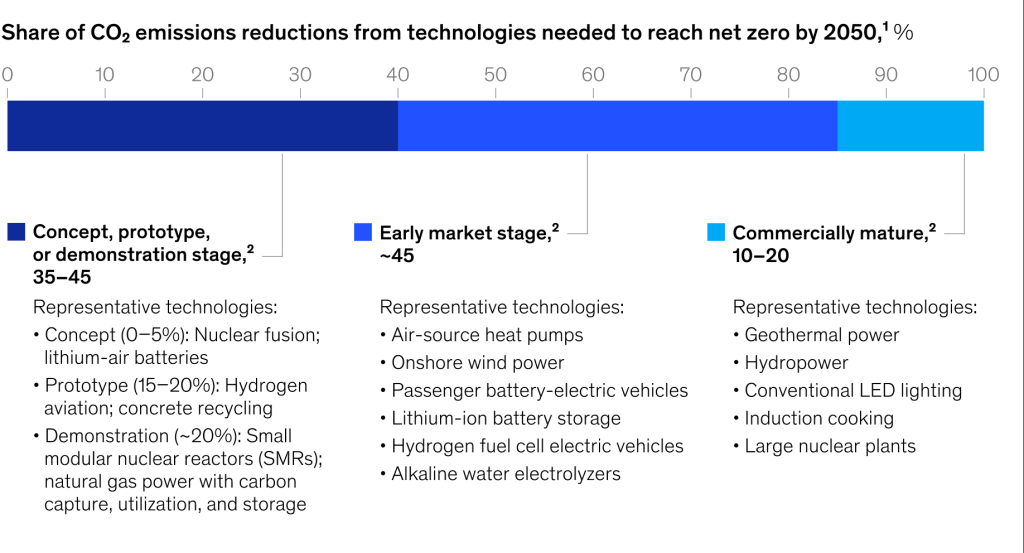
Source: https://www.mckinsey.com/capabilities/sustainability/our-insights/an-affordable-reliable-competitive-path-to-net-zero
However, before adopting any low-emissions solution, you want to know where your company stands and what parts you need to improve. That’s where a carbon footprint tracker is necessary. Today, we’ll discuss how you can measure your business’s carbon footprint with tools like Odoo, in particular.
The Problem of Carbon Footprint Management
Let’s face it, carbon footprint tracking isn’t simple. And here’s why:
Identifying the Pain Point
Many businesses struggle to accurately measure their carbon footprint due to the sheer number of factors involved. The main difficulty is that there are different scopes of emissions that need to be tracked:
- Scope 1: Direct emissions from business activities.
- Scope 2: Indirect emissions, typically from purchased energy.
- Scope 3: Everything else along the value chain.
Source: https://www.google.com/url?q=https://www.myclimate.org/fileadmin/_processed_/1/5/csm_myc-scope-company-grafik-EN_51501fc155.png
Scopes 1 and 2 are easier to track. However, Scope 3 emissions, which include everything from transportation and distribution to employee commuting, often go unmeasured because they’re spread across numerous touchpoints.
Beyond just the measurement, businesses also need to report on their emissions. This is necessary for complying with environmental regulations.
The situation in this matter leaves much to be desired. According to a report by the CDP, out of all the pollution caused by businesses globally, only a small portion — 5% — is being reduced effectively. In simpler terms, many businesses are making promises, but only a few are truly making the changes necessary.
Agitating the Discomfort
What adds to the complexity of carbon footprint tracking is the pressure that businesses face. As Deloitte suggests, multiple internal and external stakeholders demand companies to reduce their environmental impact:
- Regulators and government: About 60% of surveyed companies feel pushed to increase their climate action due to the regulations.
- Board members and management: Another 60% report feeling considerable pressure from their management teams.
- Customers: 59% of companies say their customers expect them to take a stand on environmental issues.
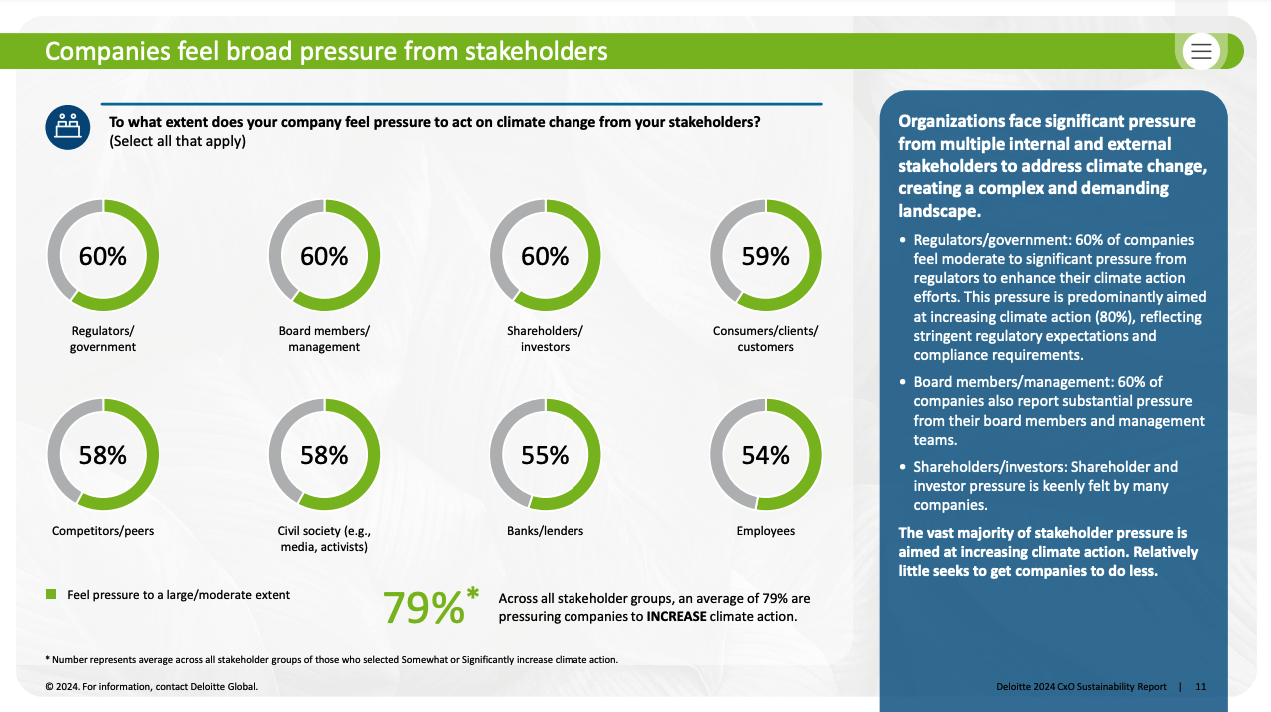
Source: https://www.deloitte.com/content/dam/assets-shared/docs/about/2024/deloitte-2024-cxo-sustainability-report.pdf
What happens if companies don’t implement the best practices for carbon footprint measurement? First off, the stakeholders we just mentioned lose confidence in the business. This loss of trust may result in legal consequences, fines, and reputational damage.
A lack of proper tracking also means businesses cannot set and meet their sustainability goals. They may end up wasting a lot of resources without actually solving the problem.
The Need for Measurement Tools
Given the discussed challenges and the lack of sustainable solutions — the biggest obstacle to achieving a net-zero transition — businesses need reliable tools to measure and manage their emissions. An app that tracks carbon footprint would be a perfect way to accurately capture data in all emission scopes and take appropriate action.
Odoo as an Effective Solution for Regulatory Compliance
The Paris Agreement aims to limit warming to below 2°C or, ideally, 1.5°C. And that’s just the major requirement. However, there are various other regulatory frameworks that businesses should follow. Let’s discuss those and how Odoo’s carbon footprint & CO2 tracker can help.
Understanding Compliance Requirements
There are a lot of things businesses should keep track of — from local laws to international guidelines like the GHG Protocol. Thus, before using an app to track your carbon footprint, it’s best to find out if it complies with regulations relevant to your area.
Implementing a Compliance Framework
Once you’ve learned about the requirements, you can start working on your company’s compliance framework. For this, you can follow existing established frameworks like the Carbon Disclosure Project (CDP) and GHG Protocol.
The CDP concentrates on several actions to respond to climate change:
- Encouraging businesses, cities, and entire states to disclose their targets for reducing emissions publicly;
- Offering measurement standards that make it easier for organizations to track and report their emissions;
- Providing campaigns and initiatives for tackling climate change.
The CDP also has a scoring system for entities based on their disclosures. Companies that lead environmental transparency are placed on the A list, while those that fail to disclose their information receive an F.
The Greenhouse Gas (GHG) Protocol provides requirements and guidance for businesses to measure and manage their greenhouse gas emissions. It suggests dividing emissions into three scopes and offers standards specifically for the corporate environment.
For companies working within the US, it’s also necessary to comply with regulations set by the United States Environmental Protection Agency (EPA). Some of the most important environmental laws include:
- Clean Air Act (CAA): Regulates air emissions from stationary and mobile sources.
- Clean Water Act (CWA): Regulates discharges into US waters and sets water quality standards.
- Pollution Prevention Act (PPA): Encourages businesses to reduce pollution by promoting cost-effective changes in production, operation, and raw materials use.
- Comprehensive Environmental Response, Compensation, and Liability Act (CERCLA): Also called Superfund, it governs the cleanup of hazardous waste sites.
- Resource Conservation and Recovery Act (RCRA): Controls hazardous waste from its generation, transportation, and treatment to disposal.
Odoo Accounting CO2 Module Overview
Odoo offers comprehensive carbon footprint tracking software for businesses. This platform lets you monitor your company’s activities and emissions by integrating various apps within the Odoo Accounting CO2 module. The solutions you can combine include:
- Fleet to monitor company vehicles and their emissions;
- Manufacturer to manage emissions from your facilities;
- Purchase to keep track of all goods and services purchased;
- Asset to oversee capital assets and investments;
- Inventory to track transportation and distribution emissions;
- Expense to monitor emissions from business trips;
- Accounting and HR to handle carbon accounting and keep an eye on employee commuting and related emissions;
- Rental to manage lease assets and their environmental impact;
- Sales to track emissions associated with sold products and services;
- Invoicing to show customers your environmental impact through invoices;
- Consolidation to monitor emissions across all your franchises and subsidiaries.
When it comes to employee commuting — a challenging aspect of carbon footprint tracking for businesses — Odoo offers additional tools to help you gather crucial data. One such is Surveys.
Other extra tools include:
- eLearning to promote corporate social responsibility and sustainability practices;
- Knowledge to provide resources on possible climate action;
- Website and email marketing to share your company’s sustainability initiatives and progress;
- Dashboard to monitor your overall carbon footprint in real time and facilitate compliance audits.
The best part? The carbon footprint and CO2 tracker app developed within Odoo is global first. Plus, it seamlessly integrates with all aspects of company operations, something no other ERP system currently offers.
The main features of the Odoo Accounting CO2 module are as follows:
- Emission factors: It lets you define physical and monetary emissions, connect multiple databases, specify uncertainty values, define measured gasses following the Kyoto protocol, and manage vintages.
- Core engine: This is where all the carbon footprint computations happen. You just have to define the emission factor and the Odoo Accounting module will automatically calculate both the price and emissions, as well as uncertainty computations to meet international regulations.
- Accounting: Here, you can set a lock date for CO2 and manage assets linked to the financial model, along with deferred revenue and expenses.
- Purchases: This feature integrates with the global value chain and sends carbon data directly to the Accounting module.
- HR commuting: It collects commuting data at the employee level.
- Expenses: This feature lets employees record their own carbon footprint.
- Reporting: It allows you to generate year-to-date and year-over-year reports in P&L and balance sheet formats, as a way how businesses can ensure carbon compliance with the GHG and BEGES standards.
Strategies for Sustainability and Emission Reduction
Now, let’s discuss some of the most effective sustainability strategies for businesses.
Energy Efficiency Initiatives
Having an energy efficiency strategy in place can significantly cut your carbon emissions and costs. Around 49% of companies surveyed by Deloitte have already implemented one.
You can start with simple energy and resource management upgrades. For example, you may switch to energy-efficient lighting or adjust your heating and cooling systems.
On a larger scale, energy markets must be transformed. In a net-zero scenario, electricity systems could provide about three times the energy they do now. A large proportion of that electricity would come from renewable sources like wind and solar. To make this happen, we’d need to build almost double the number of transmission and distribution lines we have today.
Heightened Awareness of Consequences
Organizations must understand that the cost of inaction is high. Ignoring carbon footprint tracking for businesses means not just putting a strain on the environment but also hitting their wallets hard.
For example, the United States Environmental Protection Agency (EPA) may implement one or more of the following enforcement measures against those who violate environmental regulations:
- Fines or penalties to address the violation;
- Injunctive relief requiring corrective actions;
- Additional requirements to mitigate environmental damage.
Offering Odoo as a Sustainable Solution
Finally, there’s Odoo to track your carbon footprint. Here’s how it can help with your sustainability strategy:
- Odoo customization: You can adjust Odoo to your specific goals and connect various data sources.
- Comprehensive tracking: Odoo lets you monitor emissions across Scope 1, 2, and 3.
- Integration: Odoo connects all your company’s workflows. This means you can track and manage your carbon footprint from a central platform.
- Sustainability reporting: With report generation features, you can handle compliance audits and meet environmental standards with ease.
Conclusion
Carbon footprint tracking isn’t just a box to check anymore. It is a significant part of being a responsible business. It’s also a way to save costs, improve supply chain operations, and strengthen your reputation.
So, what can you do? Start by using carbon footprint calculation software like Odoo. Embrace energy efficiency initiatives. Acknowledge the consequences of standing aside.Are you looking for extra guidance? Reach out to SmartTek for Odoo consulting. Let’s work our way to a more sustainable future together.
